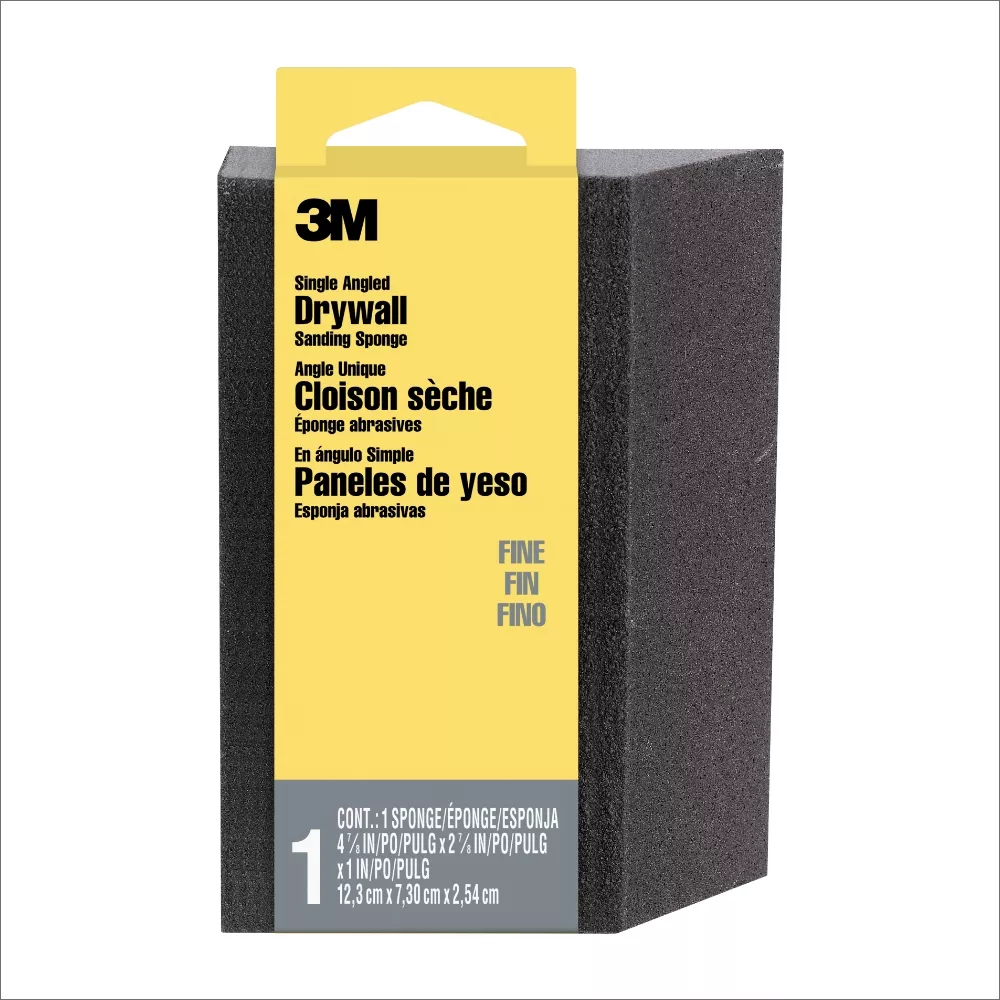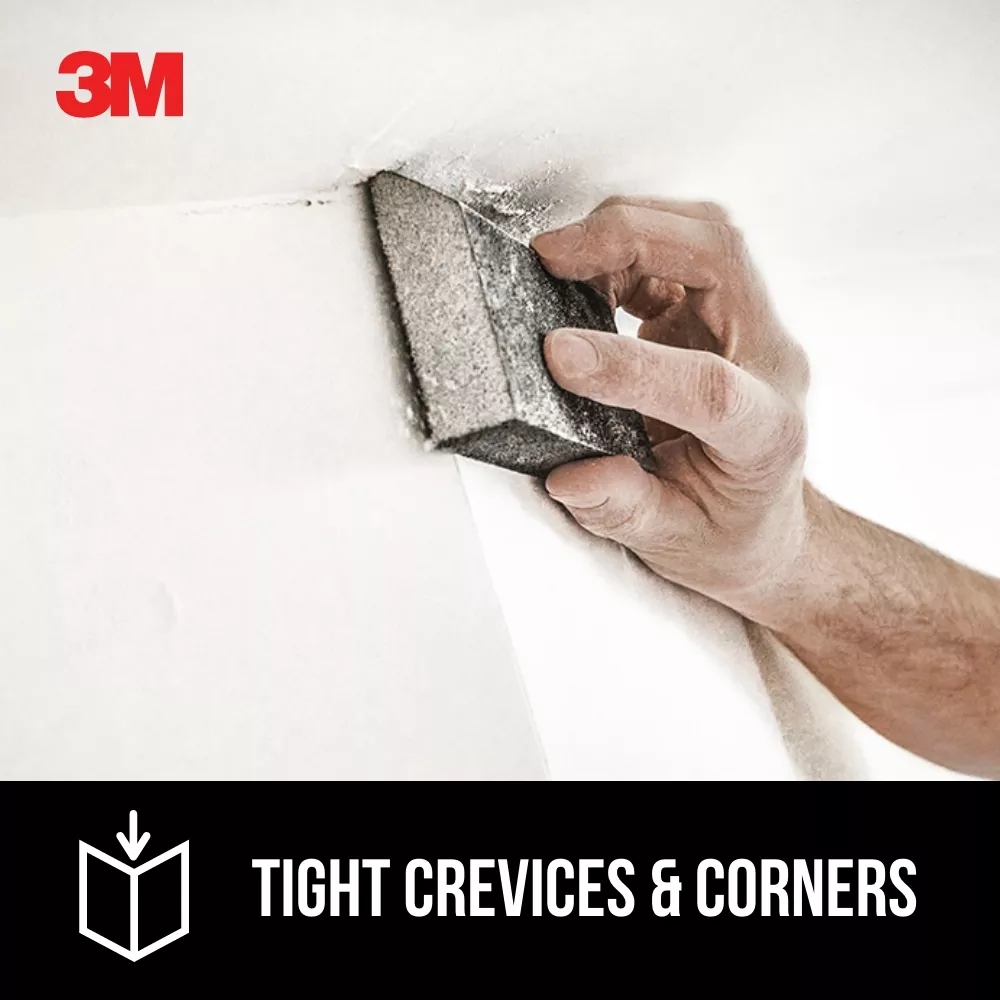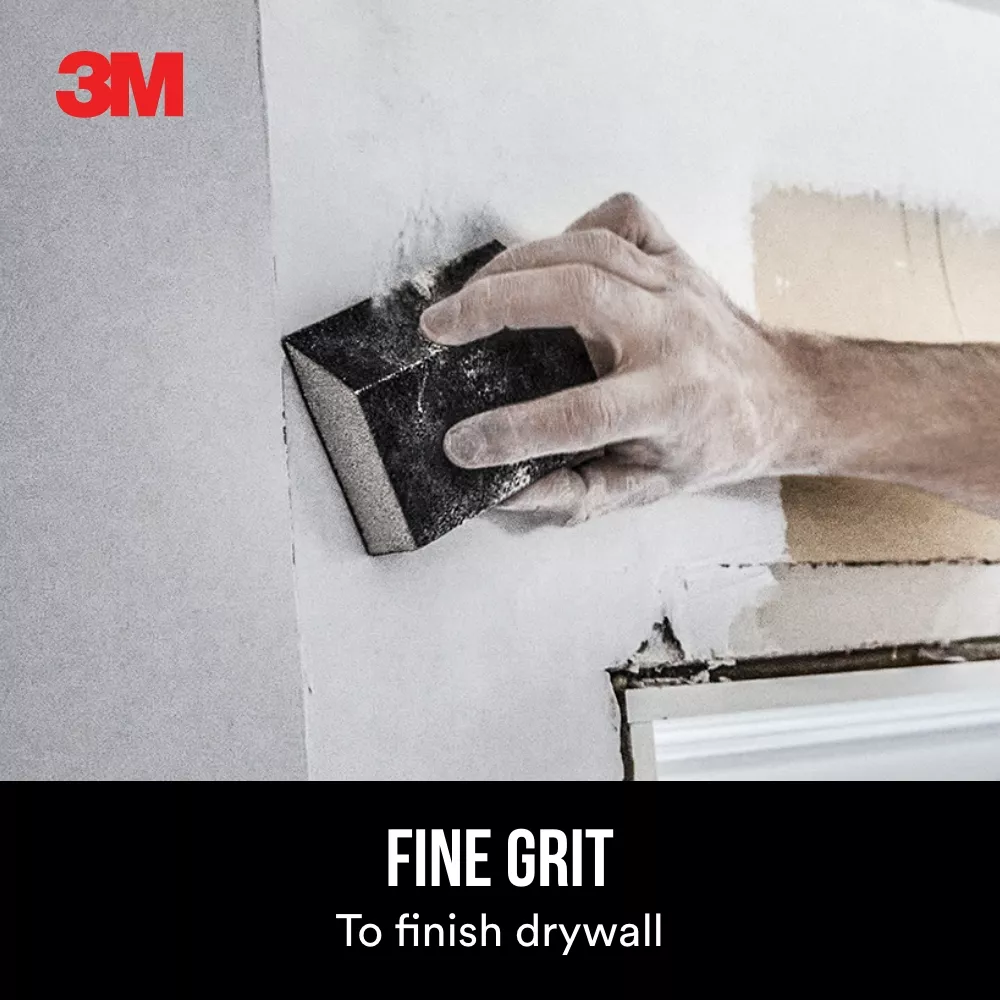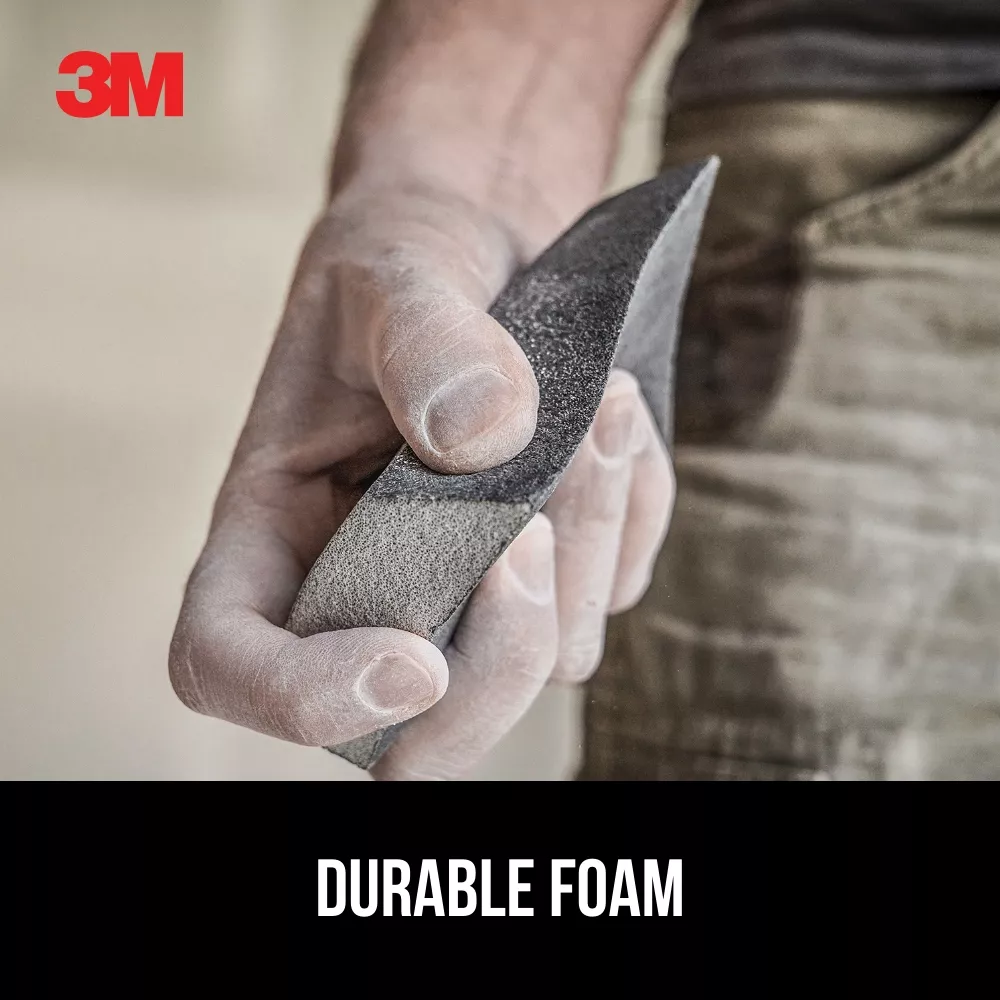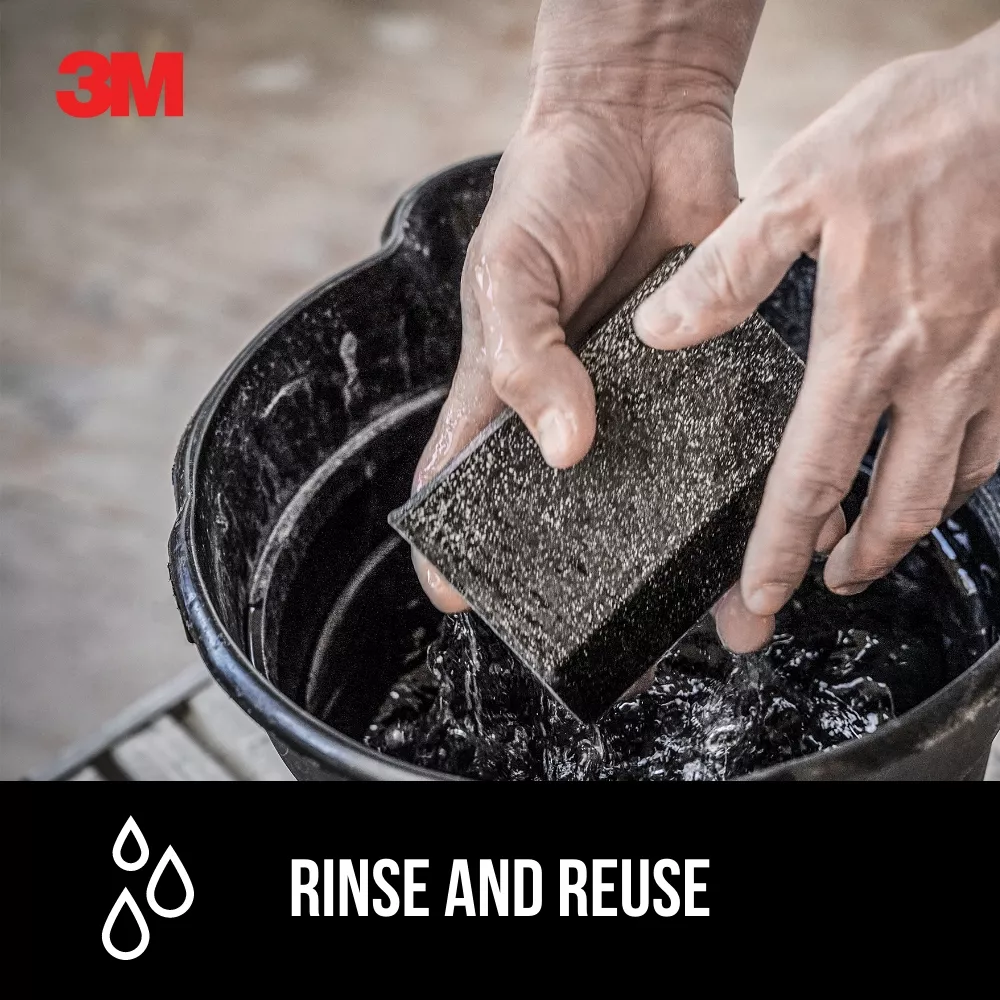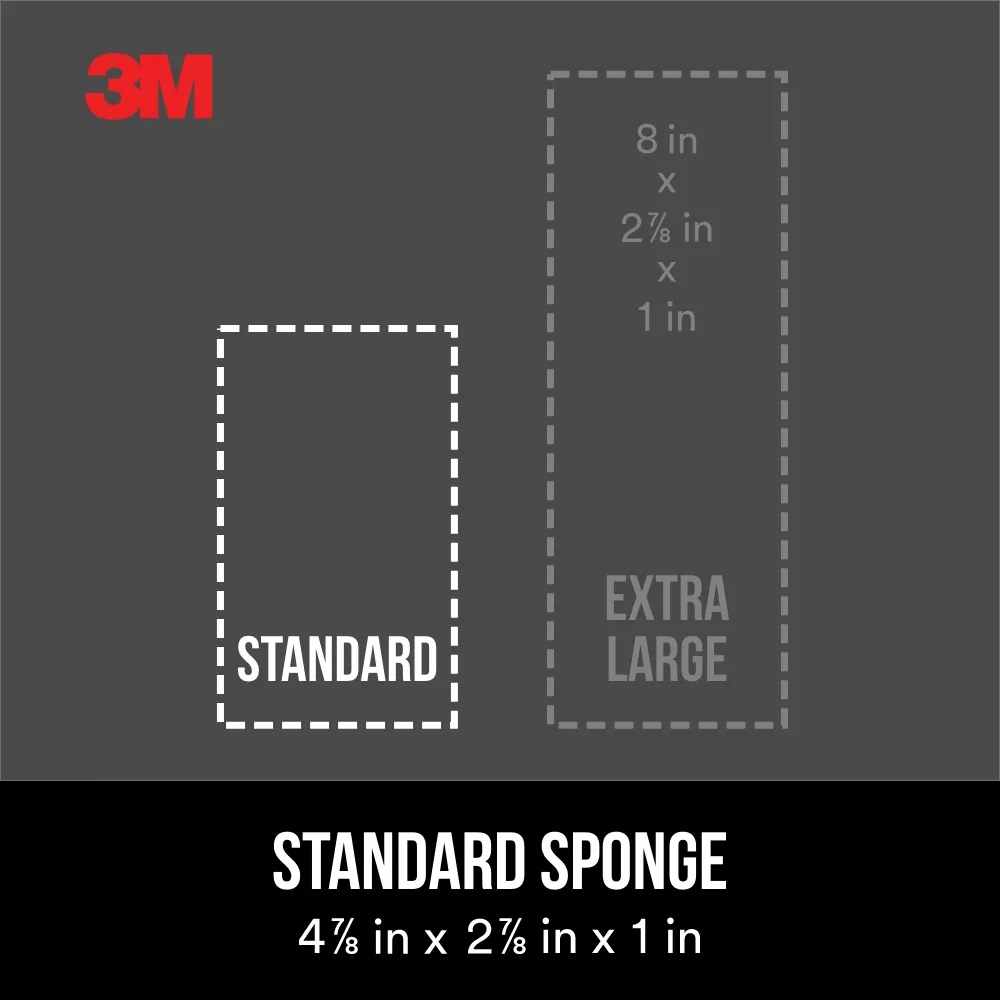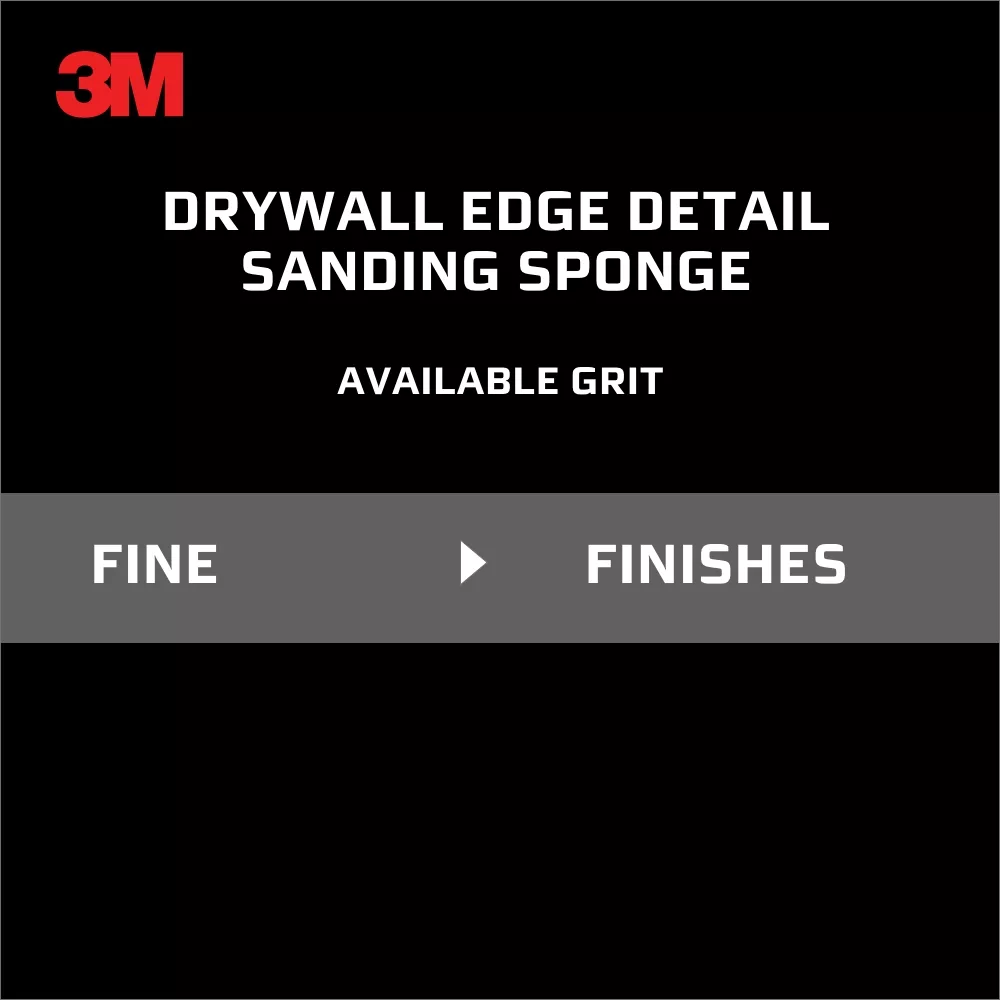| SKU | 7100101555 |
|---|---|
| Legacy SKU | 70006964160 |
| UPC | 00051115070563 |
| Catalog Number | CP-042 |
| Product Number | CP-042 |
3M Detail Area/Angled Drywall Sanding Sponge is ideal for sanding drywall and plaster during spot repair. When finished, simply rinse and reuse. Available in fine grade.
- IDEAL FOR MODERATE SANDING AND SMOOTHING of joint compounds
- DESIGNED FOR SANDING IN CREVICES AND CORNERS - also great for sanding flat or contoured surfaces
- SINGLE ANGLE
- Best for detail sanding of small to medium areas
- Conforms for easy use
- Rinse and resuse for longer life
Product Dimensions |
Imperial | Metric |
| Weight | 0.0811 lbs | |
|---|---|---|
| Width | 3-1/2 in | |
| Length | 1-1/8 in | |
| Height | 5.63 in |
Shipping Dimensions |
|
| Weight | 2.756 lb |
|---|---|
| Length | 13.89764 in |
| Width | 7.87362 in |
| Height | 5.27598 in |
PRODUCT FAQ
-
What makes the 3M™ Drywall Sanding Sponge CP-042 special?
The 3M™ Drywall Sanding Sponge CP-042 is designed for fine sanding on drywall surfaces, providing a smooth finish with its single angle design and durable construction.
-
How many sponges come in a pack of the 3M™ Drywall Sanding Sponge CP-042?
Each pack of the 3M™ Drywall Sanding Sponge CP-042 contains one sponge, perfect for both professional contractors and DIY enthusiasts.
-
Can I purchase the 3M™ Drywall Sanding Sponge CP-042 in bulk quantities?
Yes, you can! The 3M™ Drywall Sanding Sponge CP-042 is available in cases containing 24 packs, ensuring you have an ample supply for your projects.
3M Sanding Sponges are specially designed to provide efficient sanding for various surfaces such as wood, paint, metal, plastic, and drywall. These sponges are equipped with high-quality 3M abrasives and are crafted using durable and flexible foam material. The unique block shape of the sponge ensures a comfortable grip and allows for sanding on flat, contoured, or irregular surfaces with ease.
Sanding plays a crucial role in the surface preparation process before applying a coating. To achieve the best sanding results, it is recommended to sand along the grain of the surface and follow a sequence of grits, starting from coarse and gradually progressing to very fine. It is important to ensure that no more than one grit is skipped between each sanding step.



